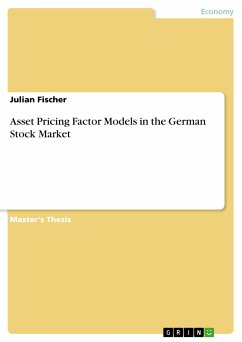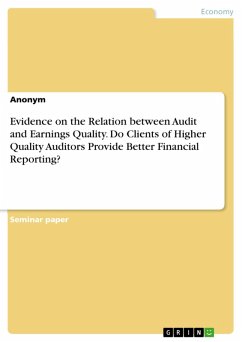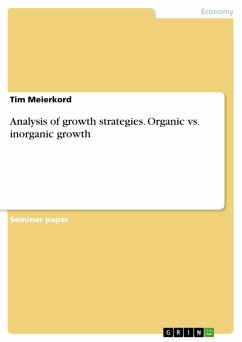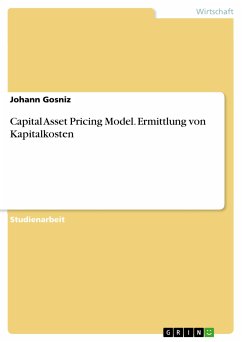Bachelor Thesis from the year 2015 in the subject Business economics - General, grade: 1,3, University of Mannheim, language: English, abstract: This term paper deals with the strategy called "quality-minus-junk" (QMJ). The reader will see that both abnormal returns, characterized as alpha, and excess returns, characterized as returns above the risk-free rate, are consistently high for any of the three major asset-pricing models. This particular thesis is going to go through the main findings and observations that Asness, Frazzini and Pedersen have made in their research on the QMJ factor and is also going to extend on some further examination of QMJ. The upcoming chapter briefly discusses the reason behind using the Gordon Growth Model as the basis of the quality score and the four main quality measures which were used in the design of the QMJ strategy. Chapters 3, 4 and 5 retest the findings by using three years of additional data and its most recent updates in May 2015. In Chapter 3 are tests which were performed for different levels of quality. Chapter 4 will focus on the role of the QMJ factor in pricing other risk factors and Chapter 5 analyzes QMJ for different economic environments. Therefore new aspects will be added to the analysis. In Chapter 6 the readers will see how the QMJ strategy has performed during different levels of the sentiment index and the last Chapter deals with the Q-factor model to see how well it explains the QMJ factor performance. There are three main questions that are pursued and dealt with in this thesis. 1. What has changed in terms of the main findings for the QMJ strategy with the new and updated data? 2. The price of quality and the premium paid for higher quality constantly changes, especially for different market cycles and environments. It would therefore be interesting to see what one of the most popular measures of market sentiment, the sentiment-index by Baker and Wurgler, can tell us about the QMJ factor and vice versa. And the last question: Is there any potential relation between the two?
Dieser Download kann aus rechtlichen Gründen nur mit Rechnungsadresse in A, B, BG, CY, CZ, D, DK, EW, E, FIN, F, GR, HR, H, IRL, I, LT, L, LR, M, NL, PL, P, R, S, SLO, SK ausgeliefert werden.









